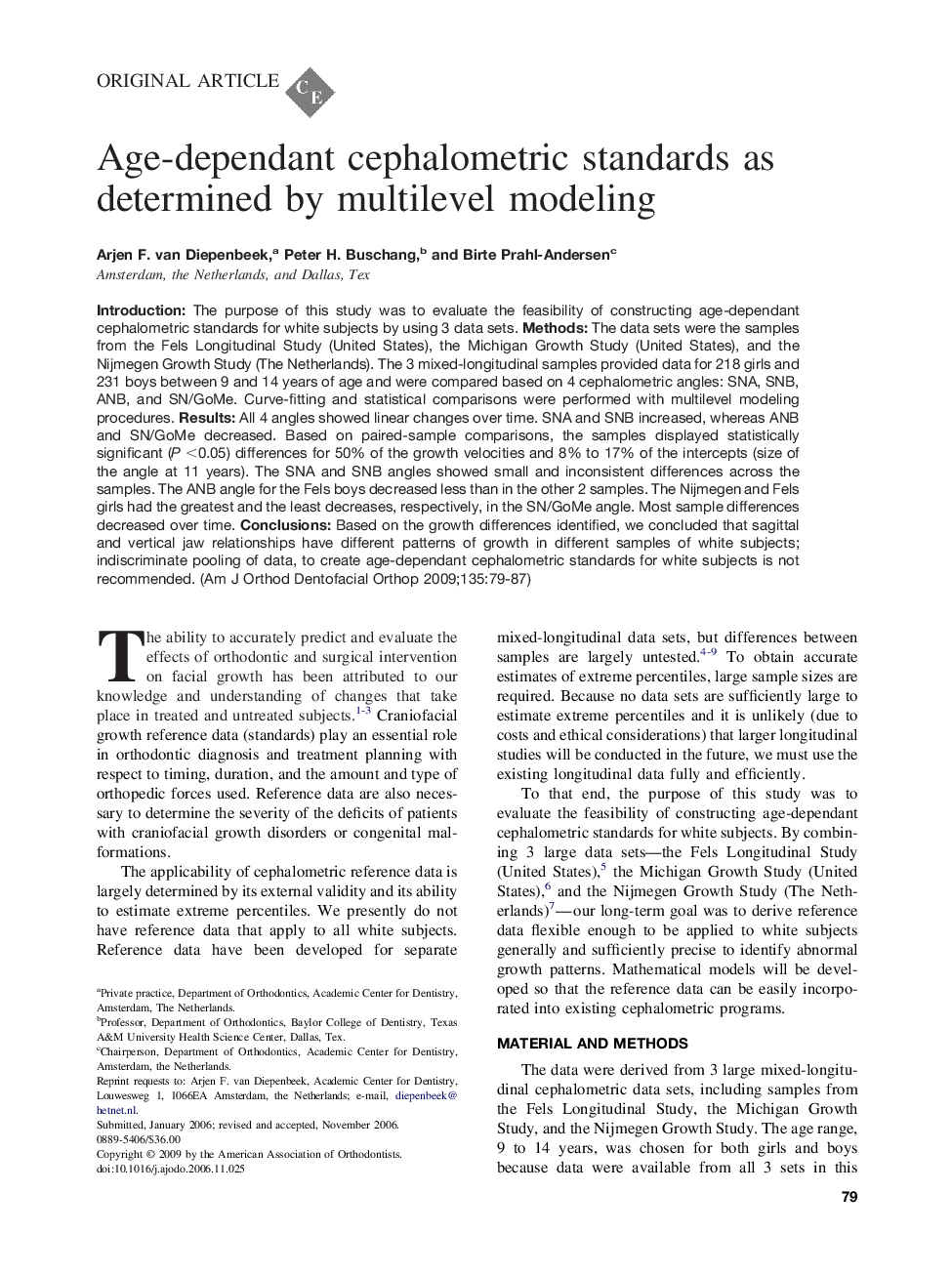| Article ID | Journal | Published Year | Pages | File Type |
|---|---|---|---|---|
| 3120080 | American Journal of Orthodontics and Dentofacial Orthopedics | 2009 | 9 Pages |
IntroductionThe purpose of this study was to evaluate the feasibility of constructing age-dependant cephalometric standards for white subjects by using 3 data sets.MethodsThe data sets were the samples from the Fels Longitudinal Study (United States), the Michigan Growth Study (United States), and the Nijmegen Growth Study (The Netherlands). The 3 mixed-longitudinal samples provided data for 218 girls and 231 boys between 9 and 14 years of age and were compared based on 4 cephalometric angles: SNA, SNB, ANB, and SN/GoMe. Curve-fitting and statistical comparisons were performed with multilevel modeling procedures.ResultsAll 4 angles showed linear changes over time. SNA and SNB increased, whereas ANB and SN/GoMe decreased. Based on paired-sample comparisons, the samples displayed statistically significant (P <0.05) differences for 50% of the growth velocities and 8% to 17% of the intercepts (size of the angle at 11 years). The SNA and SNB angles showed small and inconsistent differences across the samples. The ANB angle for the Fels boys decreased less than in the other 2 samples. The Nijmegen and Fels girls had the greatest and the least decreases, respectively, in the SN/GoMe angle. Most sample differences decreased over time.ConclusionsBased on the growth differences identified, we concluded that sagittal and vertical jaw relationships have different patterns of growth in different samples of white subjects; indiscriminate pooling of data, to create age-dependant cephalometric standards for white subjects is not recommended.
